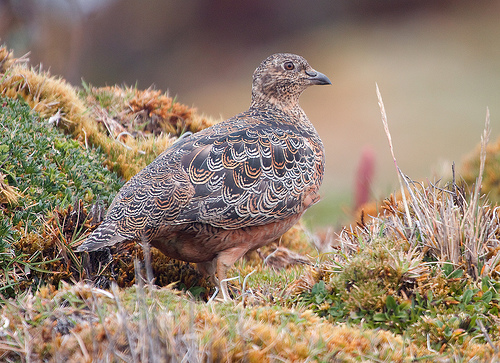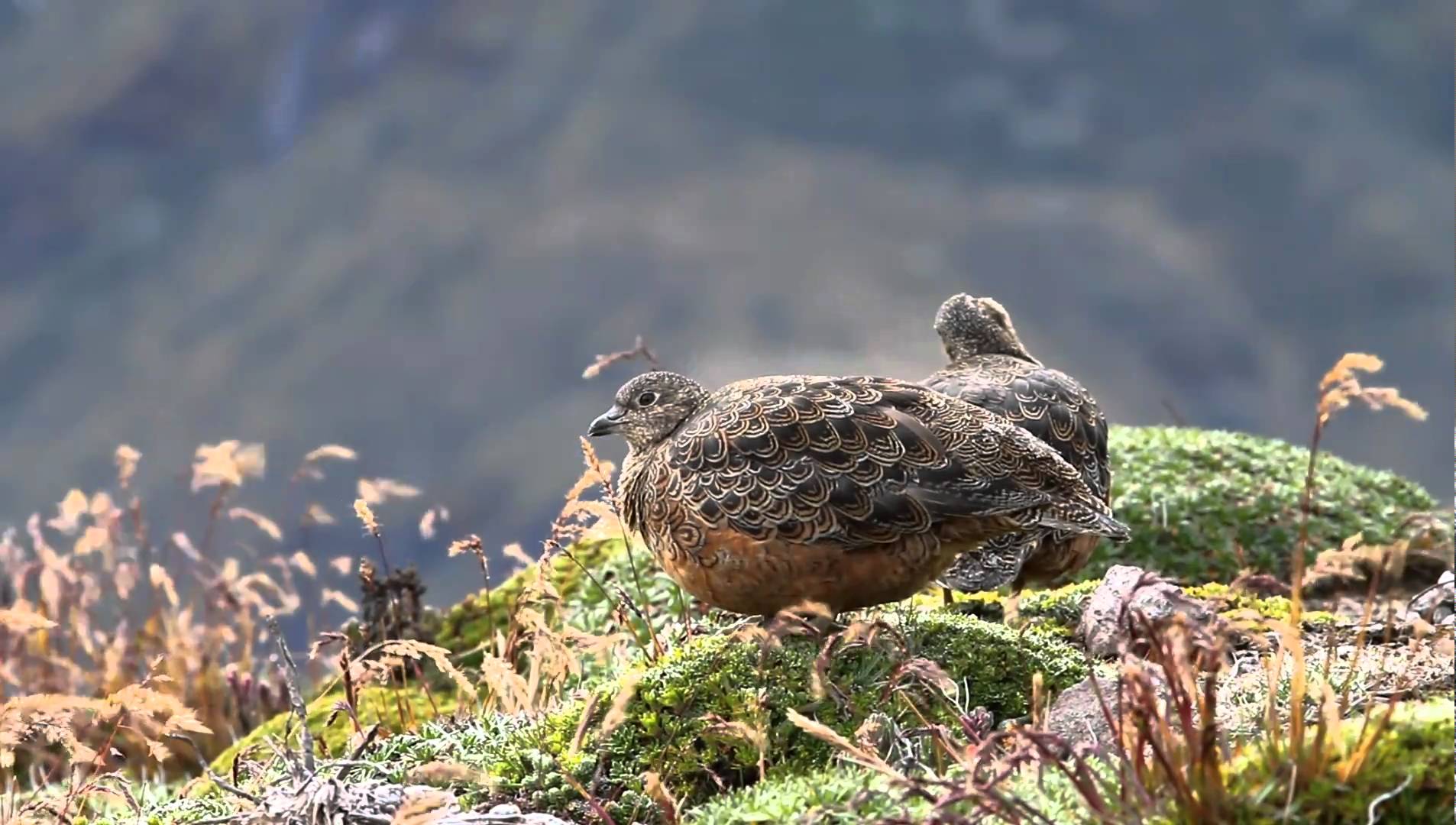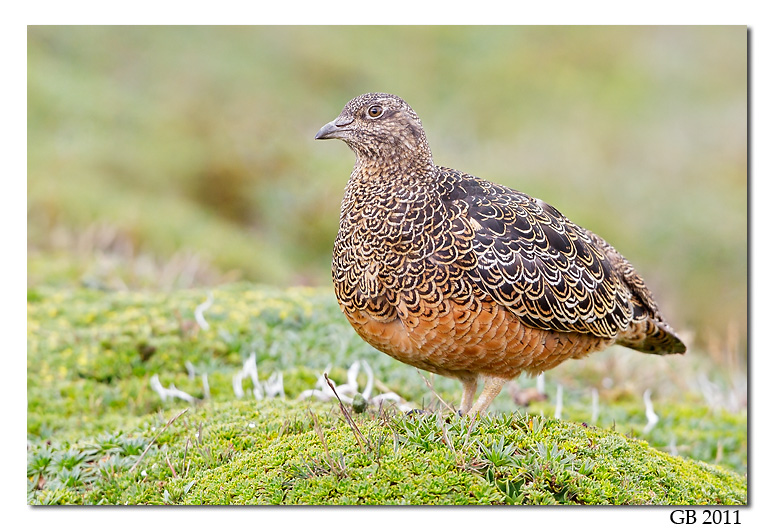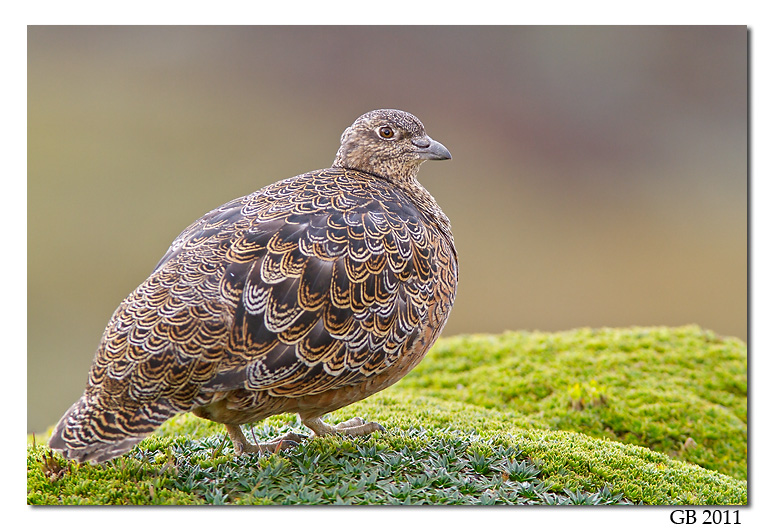
Attagis gayi
TAXONOMY
Attagis gayi I. Geoffroy Saint-Hilaire and Lesson, 1831, Santiago,
Chile. Three subspecies recognized.
OTHER COMMON NAMES
English: Gay’s seedsnipe; French: Attagis de Gay; German:
Rotbauch-Hцhenlдufer; Spanish: Agachona Grande, Agachona
Ventrirrufa.
PHYSICAL CHARACTERISTICS
10–11 in (27–30 cm); 10.6–14.1 oz (300–400 g). Upperparts,
wing lining, and breast with cryptic pattern of blackish, buff,
and whitish. Dorsal feathers mostly black in A. g. latreilli and
densely vermiculated in the southern forms. Belly is rufous (in
A. g. latreilli) or pinkish cinnamon; it is palest in A. g. gayi.
Vent densely barred in A. g. latreilli and plain or faintly barred
in the southern forms. In flight, it shows no wingbar. Juvenile
like adult but with more finely vermiculated upperparts.
DISTRIBUTION
A. g. gayi: the Andes from Tierra del Fuego to northern Chile
and Argentina, above 3,300 ft (1,000 m) in the south, above
6,600 ft (2,000 m) further north; A. g. simonsi: above 13,000 ft
(4,000 m) in the Andes from northern Argentina and Chile
through Bolivia to central Peru; A. g. latreilli: above 14,000 ft
(4,300 m) in the Andes of Ecuador.
HABITAT
Rocky slopes with scattered cushion plants near the snowline,
scree with scattered low herbs, alpine bogs.
BEHAVIOR
In pairs or small groups, rarely larger flocks. Emits loud cackling
vocalizations in flight.
FEEDING ECOLOGY AND DIET
Quietly browses on buds and leaf tips of herbs and cushion
plants.
REPRODUCTIVE BIOLOGY
Monogamous. Nest is a crude scrape with little or no lining.
Four eggs, covered with earth when not incubated.
CONSERVATION STATUS
HABITAT
rarely visited by humans. Range includes several national
parks and reserves. Numbers locally decimated by hunting
in the vicinity of mines.
SIGNIFICANCE TO HUMANS
None known except for hunting very locally.
Other popular Animals
Photo Gallery of - Rufous-bellied seedsnipe




 Animalia Life
Animalia Life